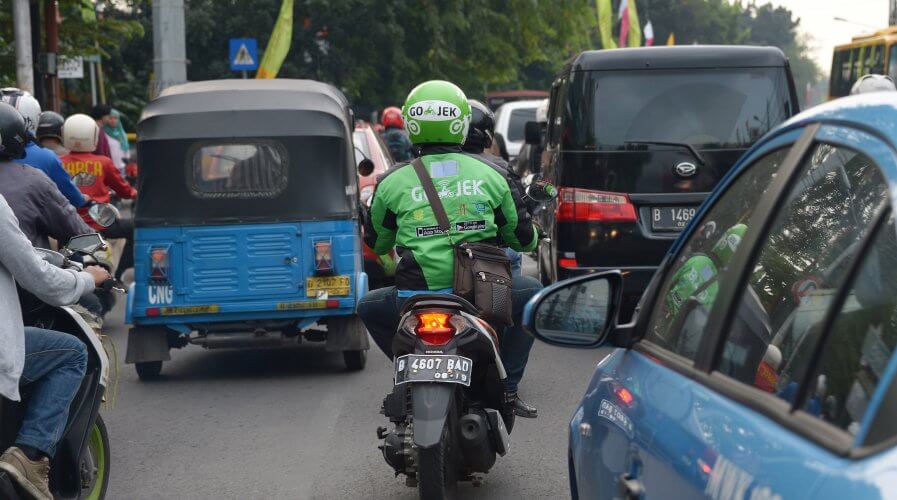
Ride-hailing motorcycles will still be the most cost-efficient mode of transportation for business users. Source: AFP
Business as usual for Indonesia despite fixed ride-hailing fares
SOUTHEAST Asia’s ride-hailing services are expected to reach US$20 billion by 2025. However, the introduction of tariffs can make the road to that targeted value a bumpy one.
Recently, Indonesian authorities mandated that ride-hailing motorcycle service providers can only charge rates within a fixed band.
These motorcycle services are popular in the region because of the competitive pricing they offer.
With the new regulation effective starting May 1, the rates will be higher than the ones currently offered.
Consequently, they might create hurdles for ride-hailing technology companies in the country such as Grab and Go-Jek.
However, Transportation Ministry Land Transportation Director General Budi Setiyadi told reporters that “this is to protect the interests of drivers and consumers.”
A fixed band will impact the companies’ ability to offer discounts and the possibility of sharing more with the drivers.
Grab Indonesia Head of Public Affairs Tri Sukma Anreianna said that the company participated actively in regulation discussions. This includes determining appropriate tariffs rates that will be implemented.
Go-Jek’s spokesperson commented that the homegrown app company will need more time to study the new regulation’s impact.
Understanding the impact of tariffs
Singapore-based Grab and Indonesian Go-Jek are two of the biggest ride-hailing service providers in Southeast Asia.
The apps began as a marketplace for drivers and users only. Though, the mobility-driven technology has matured way beyond that across the region.
Now, the apps also offer food, parcel, and grocery delivery services.
Business users that use ride-hailing services to deliver their goods will find the new mandate impacting overall costs. However, it is still expected to remain cost-effective as the ride-hailing technology companies connect them to millions of their app’s users.
According to a report, Southeast Asia’s digital penetration is the largest and fastest growing in the world.
Moreover, ride-hailing motorcycles will still be the most cost-efficient mode of transportation for business users.
Following the introduction of tariffs, ride-hailing service providers may renew their business user features to make up for the surge.
Regardless, profile features should always be kept updated and relevant to what business users need anyway.
Ride-hailing apps are efficient tools that micro-entrepreneurs and merchants can use to expand their business reach.
Despite regulations, the benefits will remain.
Perhaps what’s most important is for all parties to actively participate in discussions hereon. This is to push for greater alignment between digital growth and ensure revenue growth for businesses across the board.
READ MORE
- Strategies for Democratizing GenAI
- The criticality of endpoint management in cybersecurity and operations
- Ethical AI: The renewed importance of safeguarding data and customer privacy in Generative AI applications
- How Japan balances AI-driven opportunities with cybersecurity needs
- Deploying SASE: Benchmarking your approach






